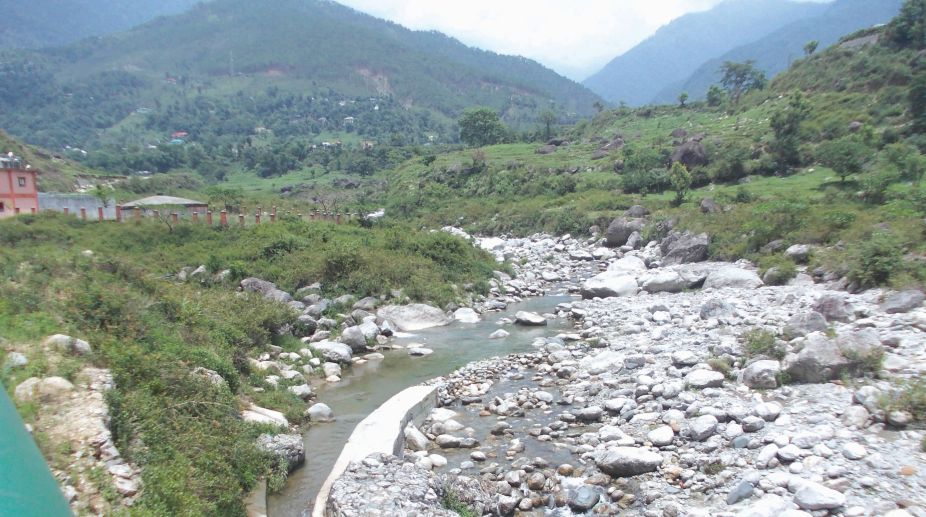Himachal govt to assess and formulate policy for revival of stalled hydro projects up to 25 MW
The decision was taken at a cabinet meeting chaired by Chief Minister Thakur Sukhvinder Singh Sukhu here on Thursday.

Jaduhal Kuhl
The traditional community managed gravity flow irrigation system in
Himachal Pradesh villages, ‘kuhls’ are bearing the brunt of small hydro-electric projects (SHPs) on rivulets and streams.
Referred as ‘environment-friendly’, the small hydro projects are damaging perennial water channels (‘kuhls’), flowing through villages for irrigation, owing to lack of monitoring on the ground and absence of cautious intervention by policymakers.
Advertisement
‘Kuhls’ are particularly important in Himachal as agriculture here is mostly rainfed.
Advertisement
The Kangra valley, which is noted for this community-based irrigation system, has over 750 large ‘kuhls’ and 2100 smaller ones, irrigating 40,000 hectares of agriculture fields, serving thousands of households.
However, the developers at SHPs usually utilise maximum water available in the streams or rivulets for power generation, which disrupts or even stops the source of ‘kuhls’, against the laid down conditions.
“The ‘ghrats’ (water mills) in the villages too are suffering for want of flow due to these projects. In Himachal, a small percentage of ‘kuhls’ are manned by Irrigation and Public Health Department, others are community governed, with some help in maintenance by Soil Conservation wing.
According to information on Himachal Pradesh Energy Development Agency (HIMURJA) website, till October 2015, 655 small hydro-electric projects (up to 5 MW) were allotted in the state with aggregate capacity of 1596.805 MW.
Out of these, 67 projects with an aggregate capacity of 262.55 MW have been commissioned.
The state government has reserved SHPs till 2 MW strictly for Himachalis and had decided to give additional marks to the Himachalis in allotment of projects up to 5 MW.
However, with funding a main hurdle with Himachalis, the locals have allegedly indulged in involving other private players in projects, who ultimately execute and commission the projects in routine.
“Being outsiders, they feel a little pain for the local resources, community and the needs. There is none to question them as they take Panchayat representatives to their side at many places,” said Akshay Jasrotia, an environment activist.
He said the self-identification of SHPs by independent power producers without any valid study by the electricity board on carrying capacity of streams is a problem area.
Special Secretary, MPP and Power, Ajay Sharma said the local Panchayats are involved in NOCs for SHPs. The safeguards are laid down, but they are not implemented on the ground. The Panchayats and the field staff of concerned department should cautiously object wherever they are broken.”
Manshi Asher from Himdhara Environment Research and Action Collective (HP) referred to a study by J Mark. Baker from a University in US on the socio-ecological impact of SHPs in Himachal in 2014, which had pointed glaring gaps on the issue.
The study mentioned that the SHPs don’t require a formal environment or social impact assessment and management plans subject to public view.
“This is a serious issue as it prevents the project affected communities and the civil society members from sharing their concerns on anticipated effects.”
Asher said Baker had recommended accountability of SHPs and strengthening of policy implementation and enforcement by state.
Advertisement
The decision was taken at a cabinet meeting chaired by Chief Minister Thakur Sukhvinder Singh Sukhu here on Thursday.
The development of these projects will involve an investment of more than Rs 50,000 crore and will reduce carbon emissions to the tune of around 1.1 million tonnes per year.
The Ministry has initiated implementation of EWS in hydro power projects, especially those located in upper reaches of hilly regions.
Advertisement
